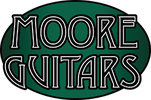Videos Hide Videos Show Videos

Do you want more photos? We are happy to provide them. Just let us know what you need.
Aurelius Tri-Voice Chorus
This is not your run of the mill chorus pedal. This compact, beautifully cased wonder is a three-voice chorus with six programmable presets and expression control. Choose from Vibrato Mode, Chorus Mode, and Rotary Mode and manipulate their Width, Rate, and Balance to achieve your ideal sound. Shift seamlessly from one mode to another to cop a blend that is all your own. One simple tap of the Preset (“Save/Recall”) switch and you can summon up to six settings of your choosing at will.
Inspired by the 1970s CE-1 Chorus Ensemble pedal, this digital unit has been tirelessly tweaked and fine-tuned to give you an all-encompassing chorus and vibrato experience like nothing else. And by popular demand, we’ve equipped this with an expression control so you can use any TRS expression pedal to manipulate the Width, Rate or Balance. Put it in Vibrato Mode and you’ll have a really subtle chorus with a seasick vibrato and alternate quickly between the two seamlessly. And that’s only one mode. The possibilities are endless.
Three Voices
Mode V: Vibrato
This mode is a familiar traditional chorus type effect that leans towards vibrato with a triangle LFO modulating a short delay line. When the Balance control is turned fully clockwise, the dry signal is removed and the effect becomes a pitch vibrato.
Width
Controls the amplitude of the LFO and determines how wide the pitch modulation will sweep.
Rate
Adjusts the speed of the LFO.
Balance
In Mode V, the Balance control adjusts the amount of pitch modulation that is blended in with the dry signal. When the Balance control is turned fully clockwise, the dry signal is removed and the effect becomes a pitch vibrato.
Mode C: Chorus
Mode C is a blend of chorus and flanger. It has more warmth and slower rates than Mode V and uses a sine wave LFO to modulate the delay line. The Width control plays a major role in this mode and determines which type of modulation is more prominent.
Width
Controls the amplitude of the LFO and determines how wide the pitch modulation will sweep. Higher Width settings have a more pronounced flanging effect. When the Width control is turned past the center point, feedback is gradually added and makes the flanging effect more prominent.
Rate
Controls the speed of the LFO.
Balance
In Mode C, the Balance control adjusts the level of the modulated signal. Turn clockwise for a more pronounced effect.
Mode R: Rotary Chorus
Mode R is a rotary chorus effect modeled after the sound of a Leslie speaker cabinet. This effect combines both amplitude and frequency modulation for a Doppler effect.
Width
Controls the amplitude of the LFO and determines how wide the pitch modulation will sweep. Lower settings accentuate the lower “woofer” frequencies and higher settings accentuate the upper “horn” frequencies.
Rate
Controls the speed of the LFO.
Balance
In Mode R, the Balance control adjusts the wet/dry balance of the signal. Turn clockwise for a more pronounced and pulsing sub frequency effect.
|
Dimensions: 4.75 x 2.50 x 2.25 in. (121 x 64 x 57 mm) with knobs |
|
Current Draw: 75 mA |
|
Input Impedance: 500 kΩ |
|
Output Impedance: 100 Ω |
|
TRS expression pedal wiring: |
|
Tip: Wiper |
|
Ring: +3.3V |
|
Sleeve: Ground |
|
Flexi-Switch® Technology: This device features Flexi-Switch® Technology! This relay-based, true bypass switching style allows you to simultaneously use momentary and latching style switching. |
|
For standard latching operation, tap the footswitch once to activate the effect and then tap again to bypass. |
|
For momentary operation, hold the footswitch down for as long as you’d like to use the effect. Once you release the switch the effect will be bypassed. |
|
Since the switching is relay based, it requires power to pass signal. |
|
Power: This device takes a standard 9 volt DC power supply with a 2.1mm negative center barrel. We always recommend pedal-specific, transformer-isolated wall-wart power supplies or multiple isolated-output supplies. Pedals will make extra noise if there is ripple or unclean power. Switching-type power supplies, daisy chains and non-pedal specific power supplies do not filter dirty power as well and let through unwanted noise. DO NOT RUN AT HIGHER VOLTAGES! |






